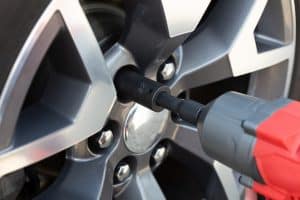The Importance of Using OEM Parts in Auto Body Repairs
 When it comes to auto body repairs, using the right parts is crucial for maintaining the safety, performance, and value of your vehicle. In this article, we will explore the significance of using OEM (Original Equipment Manufacturer) parts in auto body repairs and highlight the potential risks associated with aftermarket parts.
When it comes to auto body repairs, using the right parts is crucial for maintaining the safety, performance, and value of your vehicle. In this article, we will explore the significance of using OEM (Original Equipment Manufacturer) parts in auto body repairs and highlight the potential risks associated with aftermarket parts.
What are OEM Parts?
OEM parts are components that are made by the same manufacturer that produced the original parts for your vehicle. These parts are specifically designed and tested to fit the vehicle’s specifications, ensuring optimal performance and safety. In contrast, aftermarket parts are produced by third-party manufacturers and may not meet the same quality standards as OEM parts.
Safety Considerations
One of the most important reasons to choose OEM parts for auto body repairs is safety. OEM parts are engineered to meet rigorous safety standards and are tested to ensure they provide the same level of protection as the original components. In the unfortunate event of an accident or collision, using OEM parts can help ensure that your vehicle performs as intended, minimizing the risk of further damage or injury. On the other hand, aftermarket parts may not have undergone the same testing, potentially compromising the safety of your vehicle.
Performance and Reliability
Another key advantage of using OEM parts is their ability to maintain the performance and reliability of your vehicle. OEM parts are engineered to match the vehicle’s original components, ensuring that everything works together seamlessly. This helps preserve the vehicle’s performance and reliability, allowing you to enjoy the same driving experience as before the accident. In contrast, aftermarket parts may not have the same level of precision and may not function as effectively, leading to reduced performance and reliability.
Warranty and Insurance Implications
Using OEM parts in auto body repairs can also help preserve your vehicle’s warranty. Many manufacturers require the use of OEM parts to maintain the warranty coverage. If aftermarket parts are used, it could potentially void the warranty, leaving you responsible for any future repairs or replacements. Additionally, insurance coverage can be affected when aftermarket parts are used. Some insurance companies may only cover the cost of OEM parts, leaving you to pay the difference out of pocket.
Resale Value and Aesthetics
Maintaining the resale value and aesthetics of your vehicle is essential, especially if you plan to sell or trade it in the future. Using OEM parts can help preserve the vehicle’s resale value by ensuring that it is repaired to its original condition. Additionally, OEM parts contribute to the overall aesthetics and visual appeal of the vehicle, ensuring that it looks as good as new. Conversely, aftermarket parts may not fit properly or match the original design, negatively impacting the vehicle’s resale value and appearance.
Cost Considerations
Contrary to popular belief, aftermarket parts are not always cheaper than OEM parts. While the initial cost of aftermarket parts may be lower, they may lack the same quality and durability as OEM parts. This can result in reduced lifespan and increased maintenance expenses in the long run. On the other hand, using OEM parts may save you money by preventing further damage or repairs down the line.
Conclusion
In conclusion, the use of OEM parts in auto body repairs is crucial for maintaining the safety, performance, and value of your vehicle. OEM parts are specifically designed and tested to fit your vehicle’s specifications, ensuring optimal safety and performance. They also help preserve your vehicle’s warranty, resale value, and aesthetics. While aftermarket parts may initially seem cheaper, they come with potential risks and cost implications in the long run. By choosing OEM parts for your auto body repairs, you can ensure that your vehicle is repaired to the highest standards and enjoy peace of mind on the road.
